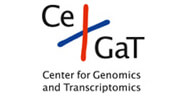LAB HOURS: MON - THU and SAT : 9:00 AM to 9:00 PM
FRI and SUN : 9:00 AM to 6:00 PM

Pregnancy Care, 29.09.2015
FML at Roche Academy, 09/2015

Benefits of non-invasive prenatal testing (NIPT)
Dr. Nehmat El Banna, Specialist Clinical Pathology (U/S)
Freiburg Medical Laboratory, Dubai, UAE
Fetal genetic testing and aneuploidy diagnosis have, until recently, both needed invasive diagnostic sampling procedures, attempts to replace invasive testing have been made and several tests with multiple components are being used.
The presence of cell-free fetal DNA (cffDNA) in the maternal circulation was first reported in 1997. cffDNA comes from the placenta and can be detected from the first few weeks of pregnancy onwards (can be tested starting week 10 of Gestation). New DNA sequencing technologies have allowed a relatively precise quantification of DNA fragments, and so the detection of the extra material resulting from fetal chromosome trisomy within the maternal plasma DNA can now be performed.If a fetus is trisomic, the proportion of DNA fragments related to that specific chromosome will be increased relative to other chromosomes.
NIPT test has improved significantly over years. The currently used test systems detect trisomies 21, 18 and 13 as well as X and Y. The specificity is reported to be >99%. The sensitivity to detect T21 is >99%, T18 > 97% and T13 >80%. The sensitivity for detecting the female gender is >90%, the male gender is recognized with a sensitivity of >99%.
NIPT is indicated:
• If the triple/quadruple test or the first trimester screening results are showing an increased risk for T21 or T18
• At increased maternal age (35 years or older at delivery)
• In cases of sonographic findings indicating an increased risk of aneuploidy
• If history of a prior pregnancy with a trisomy exists
• In cases of parental balanced Robertsonian translocation with increased risk for trisomy 13 or 21)
• And if the patient is showing anxiety towards invasive procedures (AC / CVS).
NIPT is not the method of choice if there are specific fetal anomalies on ultrasound, in triplet pregnancies, in vanished twin and in cases of known genetic anomalies that cannot be diagnosed by NIPT.
NIPT is a screening test but has improved to decrease the need for invasive testing dramatically.
Non-invasive prenatal testing has the potential to change the established paradigm of prenatal screening.
References:
Fairbrother, Johnsonetal.Clinical experience of noninvasive prenatal testing with cell-freeDNA for fetal trisomies 21, 18, and 13, in a general screeningpopulation. Prenatal Diagnosis 2013;33:580–583
Benn P, Borell A, Chiu R, et al. Position statement from the Aneuploidy Screening Committee on behalf of the Board of the International Society for Prenatal Diagnosis.PrenatDiagn. 2013 Jul;33(7):622-9.
Norton et al. N Cell-free DNA Analysis for Noninvasive Examination of Trisomy Engl J Med 2015; 372:1589-1597.

Lab hours
MON - THU and SAT 9:00 AM to 9:00 PM | FRI and SUN : 9:00 AM to 6:00 PM













